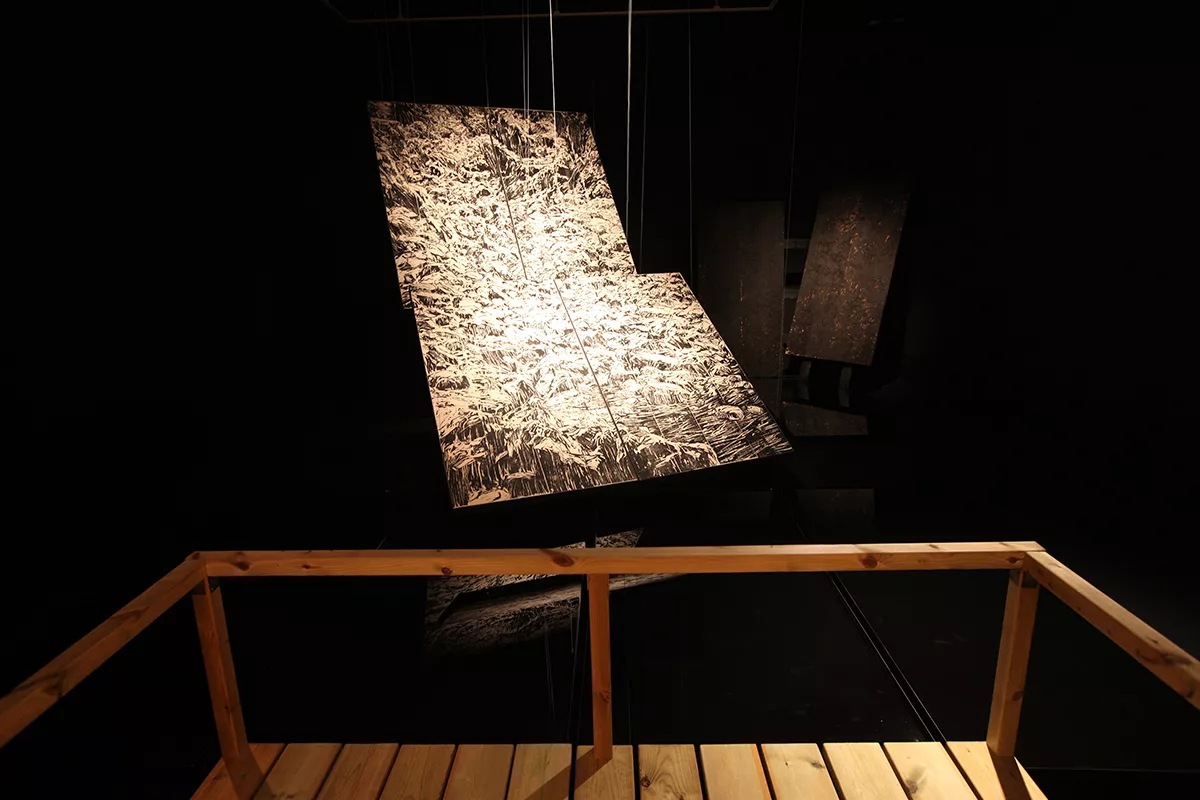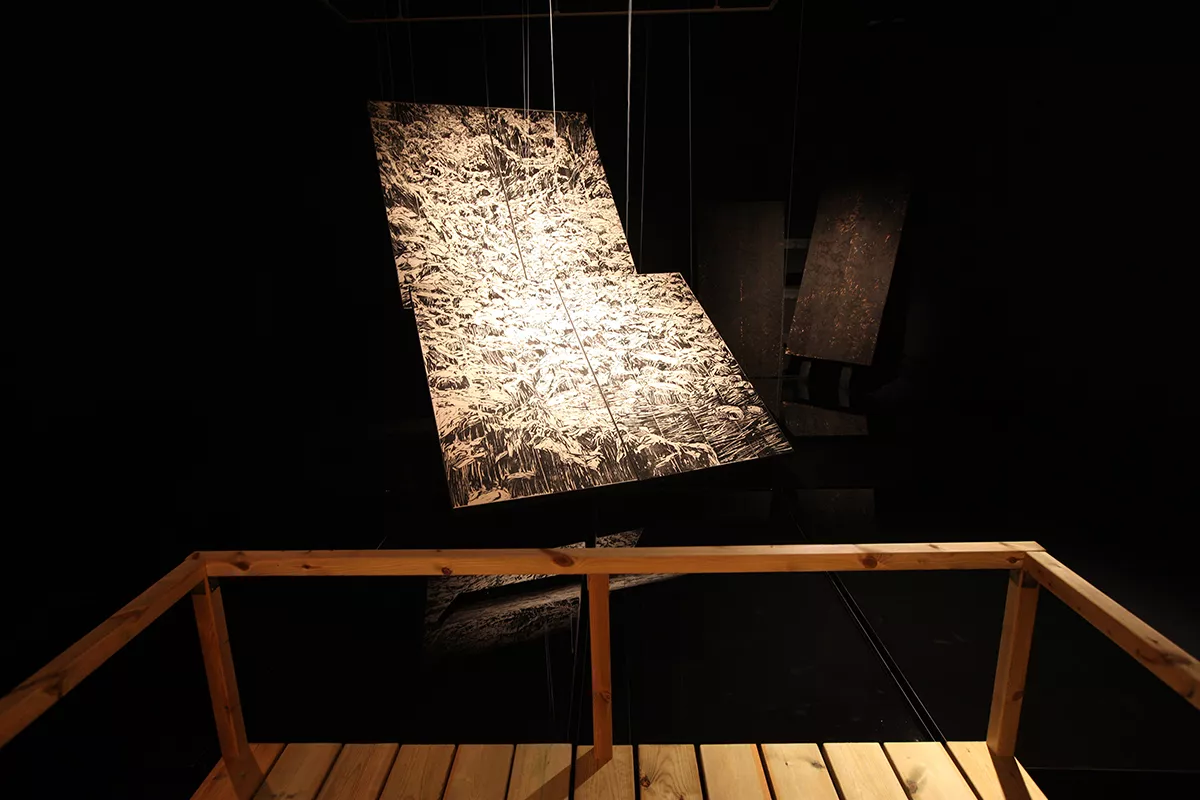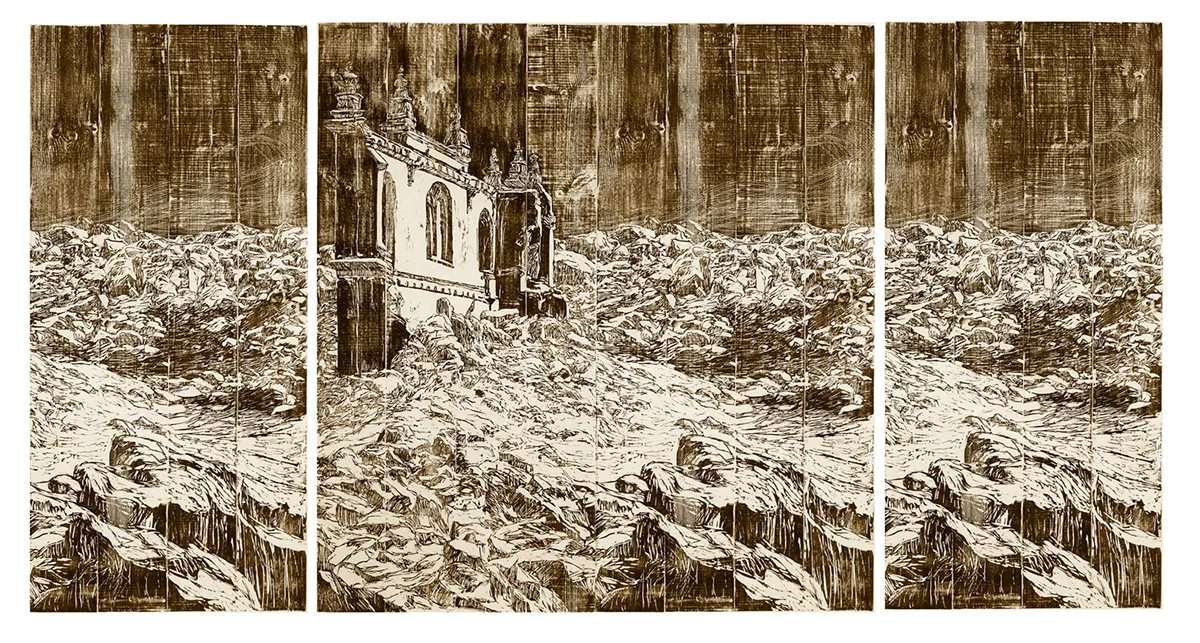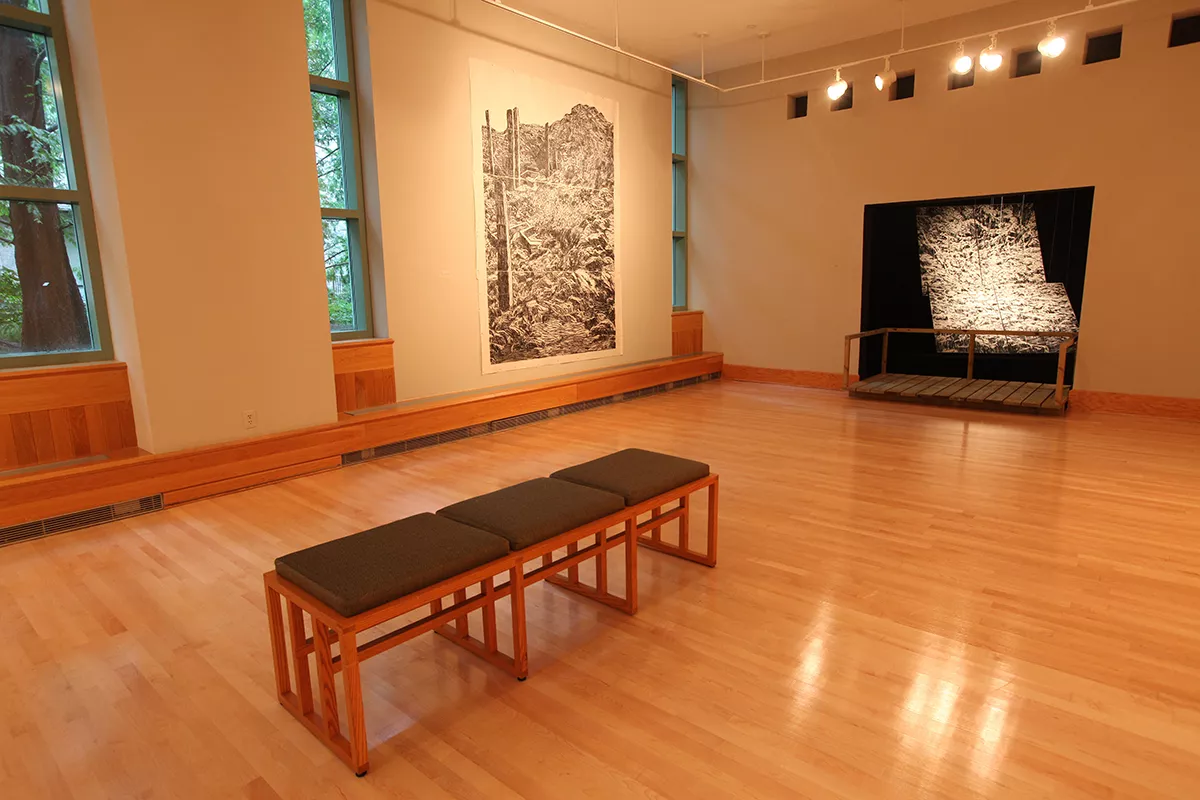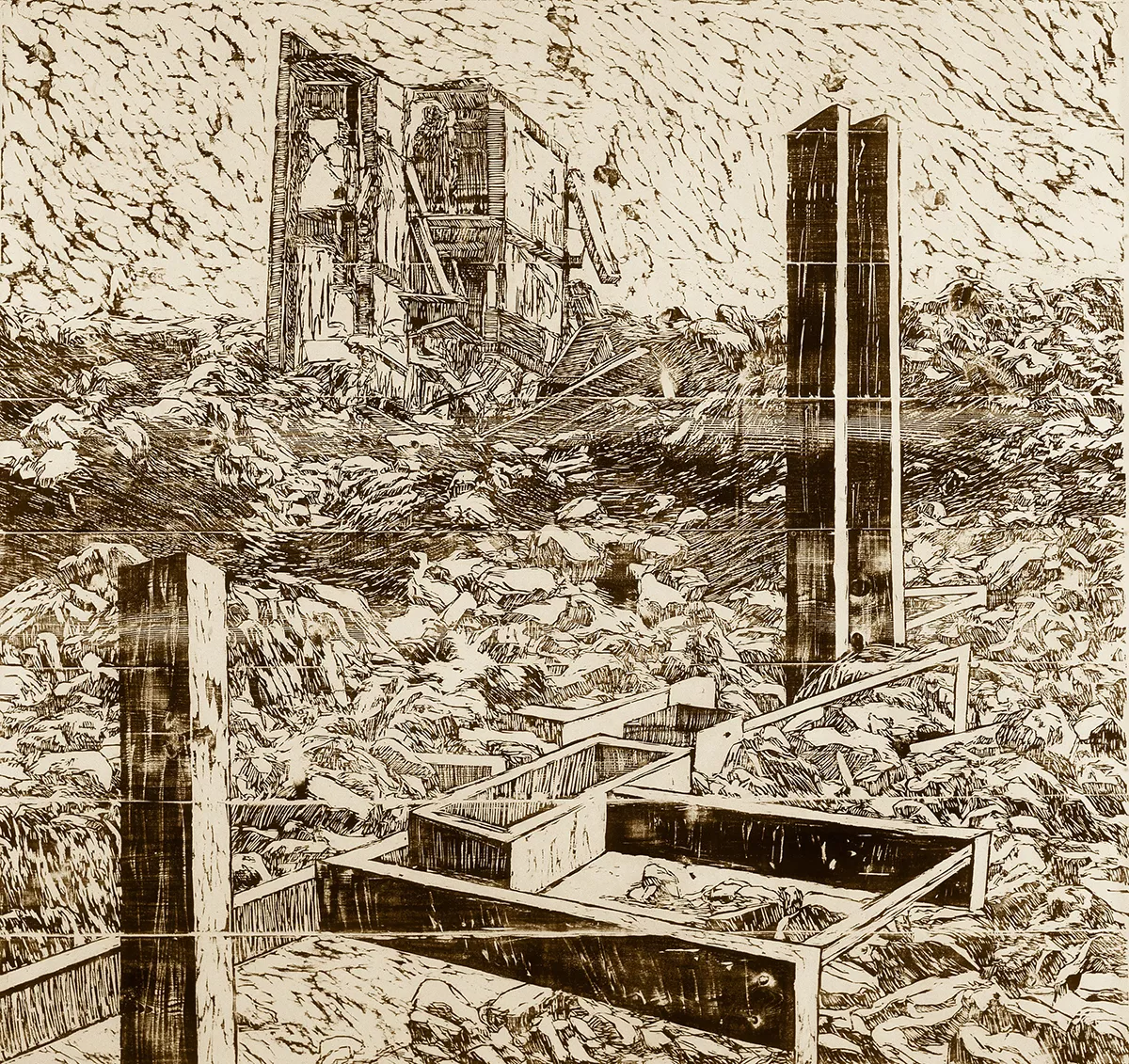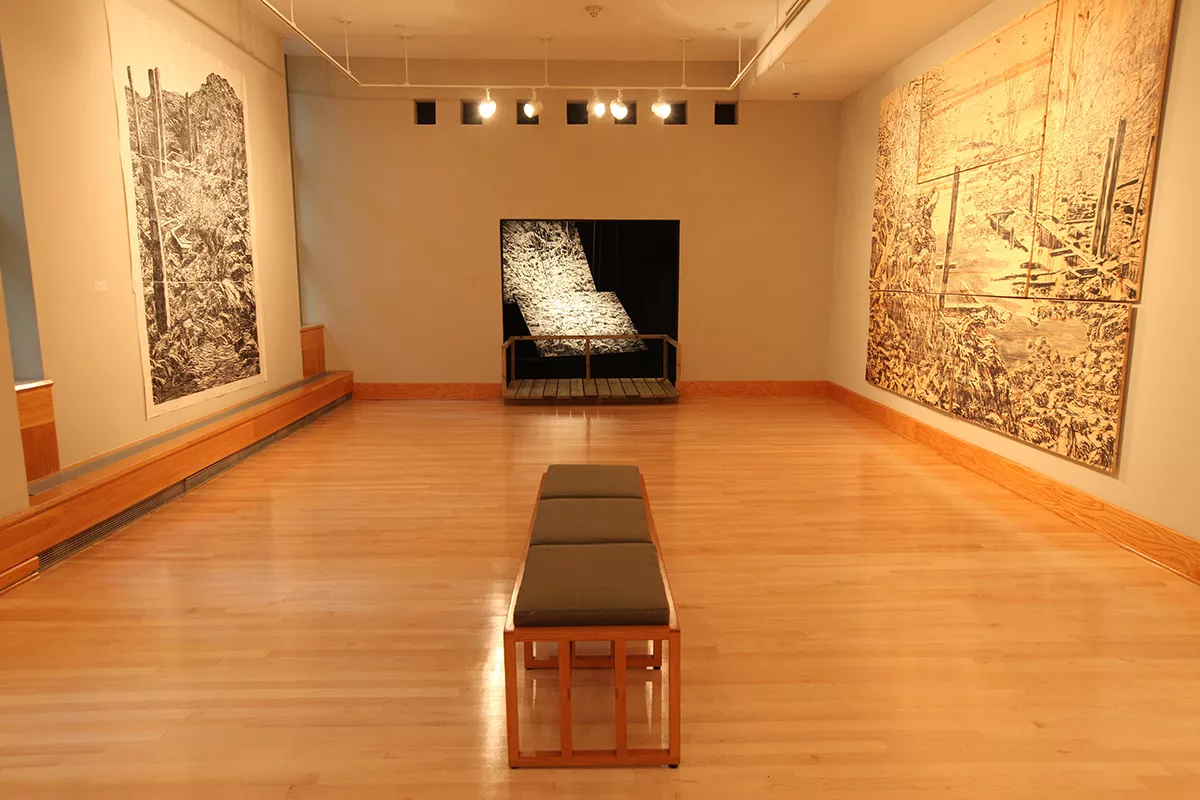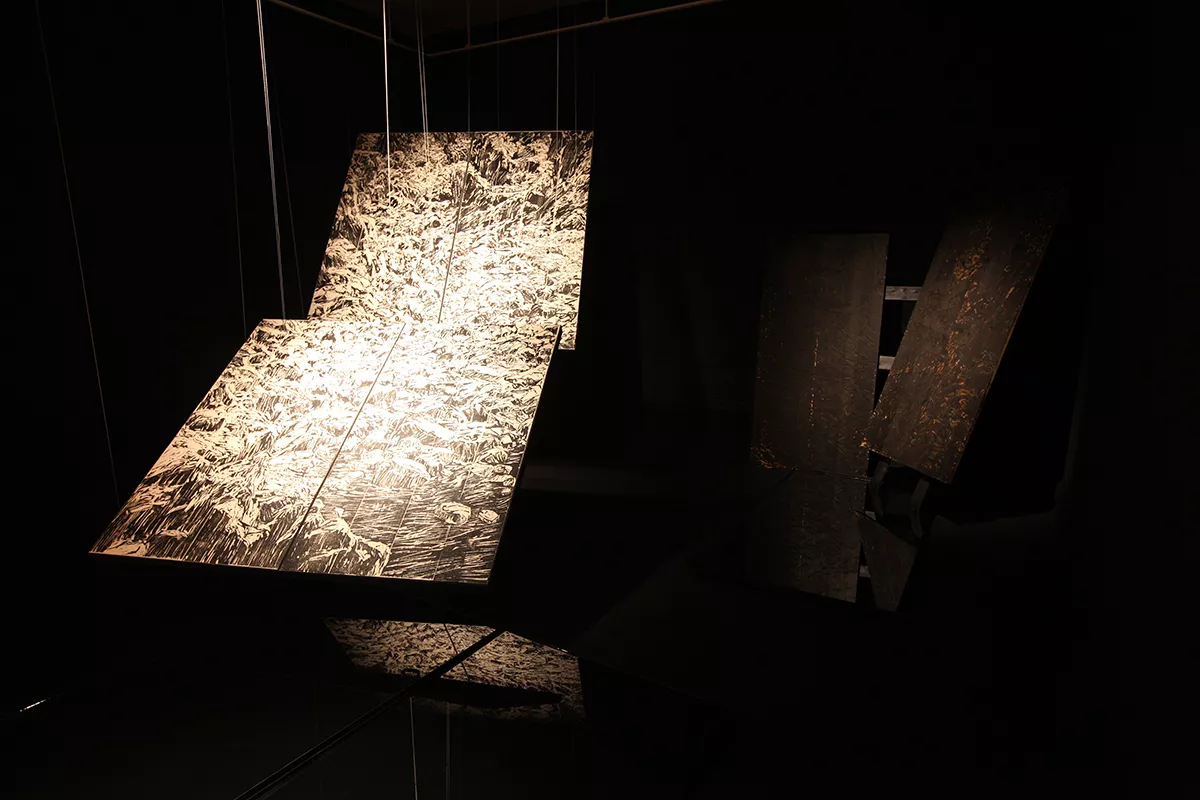Orit Hofshi: Resilience
Resilience was an exhibition of key works by Orit Hofshi that have not yet been shown in the United States. Although Hofshi has been internationally recognized as a printmaker, this exhibition highlights the elastic nature of her creative practice, which includes paintings, inked and carved woodblocks, Tusche crayon rubbings, and Convergence, an installation she designed for the List Gallery’s inner room. The exhibition took place from September 8–October 22, 2011. Curated by Andrea Packard, List Gallery director, this exhibition and the accompanying color catalog are made possible through a grant from the William J. Cooper Foundation.
Hofshi's haunting vistas of ruins and rugged landscapes respond to both the sublime forces of nature and the consequences of war. The daughter of Holocaust survivors who helped found Matzuva, one of Israel's first kibbutzim, she grew up witnessing conflicts over land and ideology written in the changing boundaries and ecology of the country. Through her art, she seeks commonalities of experience that transcend nationalism and sectarianism. Addressing the prevalence of violence and dislocation, she asserts the need for reflection, persistence, and understanding.
A 1985 graduate of the Neri Bloomfield Academy of Design, in Haifa, Israel, Hofshi also studied in the Pennslyvania Academy of the Fine Arts Certificate Program (1986-90), where she received the Cresson Traveling Scholarship and numerous other awards. She received an M.A. from the University of Leeds, Bretton Hall College, U.K in 2002. Her work distills lessons from European masters as diverse as Dürer and Titian; Käthe Kollwitz, members of the Die Brücke group, and contemporary artists such as Anselm Kiefer and William Kentridge. In addition, Hofshi takes inspiration not only from direct observation, photography, and memory, but also from the expressive materials and processes of printmaking.
A centerpiece of the exhibition is Hofshi’s newest work, Convergence. Transforming the List Gallery’s 20-foot–square inner room into a type of black box or tableaux, she theatrically arranges and lights diverse woodcut prints, carved and inked boards, and other media. Standing on a wooden deck positioned at the entrance to the room, viewers saw four woodcut prints depicting an avalanche of rubble. Suspended from the ceiling at shifting angles, the prints seemed to cascade toward the observation deck and four rectangular vessels in front of it, which are filled with inky fluid. In the far corners of the room, she positioned additional vessels and the carved and inked matrices she used to create her woodcuts. Using wood, paper, and ink—the language of solid and liquid, darkness and light—Hofshi evokes the essential elements of nature and art, dramatizing the precarious balance of destructive and creative forces, chaos and order.
Hofshi has been the subject of numerous solo exhibitions at distinguished venues including Ephemeral Passage at The Open Museum, Tefen, Israel; The Road Not Taken, at the Print Center, Philadelphia, and Datum Collectanea, at the Herzliya Museum of Contemporary Art, Israel. Her works can be found in the collections of preeminent institutions such as the Tel Aviv Museum of Art; The Open Museum, Tefen; and The Israel Museum, Jerusalem. Her work is also held by the Pennsylvania Academy of the Fine Arts, Philadelphia; the Paul J. Gutman Library, Philadelphia University, Philadelphia; and The Ballinglen Arts Foundation, Ballycastle, County Mayo, Ireland.
Hofshi's many awards include the Jacob Pins Award for an Israeli Printmaker from the Israel Museum (2010); the Distinguished Alumni Award from the Pennsylvania Academy of the Fine Arts, Philadelphia (2010); and the Prize for Outstanding Quality in Contemporary Israeli Art, from the Ministry of Science and Culture, Israel.
